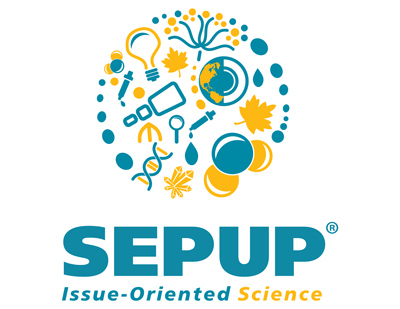SEPUP Simulations and Digital Activities
-
Cells Unit: Modeling Cell Structure and Function
This interactive computer simulation helps review the ways that parts of a cell contribute to its function and compares plant and animal cell structures and functions.
-
Ecology Unit: Effects of an Introduced Species
Compare data collected by scientists in the years before and after the arrival of the zebra mussels. From the data, begin to build a picture of how the ecosystem has changed.
-
Evolution Unit: Manipulating Genes
Gather information about two ways that people are intentionally affecting evolution to produce plants and animals that have traits that are desirable to people.
-
Evolution Unit: Mutations and Evolution
Use a computer simulation to predict and analyze how trait frequency changes in your population when there is a change in the environment, such as improvements in health care or decreased levels of malaria.
-
Fields Unit: Visualizing an Electric Field
This simulation allows students to visualize the interaction between static charges. The model enables students to ask and then investigate questions about what affects the direction and magnitude of forces in an electric field. Students also investigate the potential energy stored in the system of interacting charges.
-
Fields Unit: Electric Field Transporter
In this activity, the gravitational field on the Moon will be simulated so you can design a transporter. This will help determine if electric fields can be useful for the Moon transporter.
-
Geology Unit: Mapping Locations of Earthquakes and Volcanoes
In this activity, students use the science and engineering practice of analyzing and interpreting data as they map the locations of significant earthquakes and major volcanoes around the world. They look for patterns in the distribution of earthquakes and volcanoes as a first step in discovering that Earth’s surface is broken into plates.
-
Geology Unit: Plate Boundaries
Through this computer simulation, students investigate how Earth’s surface changes over time due to geological processes caused by plate motion. Students analyze and interpret data from the simulation to identify the similarities and differences between the geological processes that happen at the three plate boundaries.
-
Space Unit: Moon Phases
Use a computer simulation that will allow you to observe the Moon’s orbit around Earth from a different point of view. In this case, your point of view will be looking down on the Earth–Moon system from out in space.
-
Space Unit: A Year Viewed from Space
Each year on Earth, we observe patterns of changing temperatures, daylight hours, and seasons. In this activity, you will use a computer simulation to model Earth’s orbit around the Sun to help understand why we observe these patterns.
-
Space Unit: Modeling Gravity
Use a computer simulation to observe how gravity is responsible for the motions within our Solar System. By modifying the distance between objects and the mass of objects, students are able to observe how these variables affect the orbital periods of planets in our Solar System. Extending this concept, students are able to calculate the…

